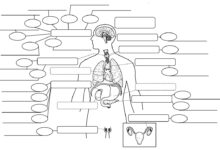System Development Life Cycle: 7 Powerful Stages Revealed
Ever wondered how complex software systems come to life? It all starts with a powerful framework known as the system development life cycle. This structured approach guides teams from idea to deployment—and beyond.
What Is the System Development Life Cycle?

The system development life cycle (SDLC) is a comprehensive framework used to design, develop, test, and deploy information systems efficiently. It’s not just for software—it applies to any system involving technology, data, and user interaction. By following a series of well-defined phases, organizations can minimize risks, control costs, and ensure high-quality outcomes.
Originally developed in the 1960s during the rise of large-scale business computing, SDLC has evolved alongside technological advancements. Today, it’s a cornerstone of project management in IT, used by startups and Fortune 500 companies alike. Whether building a mobile app or overhauling an enterprise resource planning (ERP) system, SDLC provides the roadmap.
One of the key benefits of the system development life cycle is its ability to bring clarity and accountability. Each phase has specific deliverables and review points, ensuring stakeholders stay aligned. This reduces misunderstandings, prevents scope creep, and increases the likelihood of on-time, on-budget delivery.
Core Objectives of SDLC
The primary goal of the system development life cycle is to produce high-quality systems that meet or exceed user expectations. To achieve this, SDLC focuses on several core objectives:
- Deliver functional and reliable systems within budget and timeline constraints
- Ensure alignment between business needs and technical solutions
- Facilitate clear communication among stakeholders, developers, and end-users
- Provide a structured process for managing changes and updates
- Support long-term maintenance and scalability
These objectives are not just theoretical—they translate into real-world success. For example, a study by the Standish Group found that projects using formal SDLC methodologies had a significantly higher success rate than those without structured processes.
Key Stakeholders in the SDLC Process
Successful implementation of the system development life cycle depends on collaboration among various stakeholders. These include:
- Project Managers: Oversee timelines, budgets, and team coordination.
- Business Analysts: Bridge the gap between business needs and technical requirements.
- Developers and Engineers: Build and code the system according to specifications.
- Quality Assurance (QA) Teams: Test the system for bugs, performance issues, and usability.
- End-Users: Provide feedback and validate that the system meets their needs.
- System Administrators: Handle deployment, integration, and ongoing support.
Each stakeholder plays a critical role at different stages of the system development life cycle. Their input ensures the final product is not only technically sound but also practical and user-friendly.
“The best systems aren’t built overnight—they’re the result of disciplined, phased development.” — Dr. Margaret Rouse, Tech Encyclopedia Contributor
The 7 Stages of the System Development Life Cycle
The system development life cycle is typically broken down into seven distinct stages. While some models use fewer phases (like the classic five-stage model), the seven-stage approach offers greater granularity and control. Each stage builds upon the previous one, creating a logical flow from concept to retirement.
Understanding these stages is crucial for anyone involved in IT projects. They provide a shared language and framework that align teams and set clear expectations. Let’s dive into each phase in detail.
Stage 1: Planning and Feasibility Analysis
This is where every system development life cycle begins. The planning phase determines whether a proposed system is worth pursuing. It involves identifying the problem, defining objectives, and assessing feasibility from technical, economic, operational, and legal perspectives.
During this stage, project managers and business analysts conduct interviews, review existing processes, and gather preliminary requirements. They also estimate costs, resources, and timelines. A key output is the feasibility study report, which helps decision-makers approve or reject the project.
For example, if a hospital wants to digitize patient records, the planning phase would assess whether current infrastructure supports such a system, how much it would cost, and whether staff can adapt to the change.
Tools commonly used in this phase include SWOT analysis (Strengths, Weaknesses, Opportunities, Threats), cost-benefit analysis, and Gantt charts for initial scheduling. According to the Project Management Institute (PMI), projects that invest time in thorough planning are 50% more likely to succeed.
Stage 2: System Analysis and Requirements Gathering
Once a project is approved, the next step in the system development life cycle is detailed analysis. This phase focuses on understanding exactly what the system must do. Analysts work closely with stakeholders to gather functional and non-functional requirements.
Functional requirements describe what the system should do—like allowing users to log in, search databases, or generate reports. Non-functional requirements cover performance, security, usability, and reliability. For instance, a banking app might require transactions to be processed in under two seconds (performance) and data encrypted at rest (security).
Techniques used in this phase include user interviews, surveys, workflow modeling, and use case diagrams. The output is a Software Requirements Specification (SRS) document, which becomes the foundation for design and development.
One common pitfall in this stage is incomplete or ambiguous requirements. Research shows that over 70% of project failures can be traced back to poor requirement gathering. That’s why this phase is so critical in the system development life cycle.
Stage 3: System Design
With clear requirements in hand, the design phase transforms them into a technical blueprint. This is where architects and designers define the system’s structure, including data models, user interfaces, network configurations, and software architecture.
The design phase produces two main types of documentation:
- High-Level Design (HLD): Outlines the overall system architecture, modules, and their interactions.
- Low-Level Design (LLD): Dives into the specifics of each module, including database schemas, class diagrams, and algorithm logic.
Design decisions made here have long-term implications. Choosing a microservices architecture over a monolith, for example, affects scalability, deployment, and maintenance. Tools like UML (Unified Modeling Language) and ER diagrams (Entity-Relationship) are widely used.
A well-designed system not only meets current needs but is also flexible enough to adapt to future changes. This is a key principle in the system development life cycle—design for evolution, not just completion.
Stage 4: Development and Coding
This is where the rubber meets the road. In the development phase of the system development life cycle, programmers write the actual code based on the design specifications. This stage can vary greatly in duration depending on the system’s complexity.
Development teams use programming languages, frameworks, and tools suited to the project. For web applications, this might include JavaScript, React, Node.js, and PostgreSQL. For mobile apps, Swift or Kotlin may be used. Version control systems like Git ensure code integrity and collaboration.
Modern development practices often incorporate Agile methodologies, even within traditional SDLC models. This means coding is done in sprints, with frequent integration and testing. Continuous Integration/Continuous Deployment (CI/CD) pipelines automate builds and tests, improving efficiency and reducing errors.
Code quality is paramount. Teams follow coding standards, conduct peer reviews, and use static analysis tools to catch bugs early. According to a report by GitHub, projects with regular code reviews have 40% fewer production defects.
Stage 5: Testing and Quality Assurance
No system is ready for deployment without rigorous testing. This phase of the system development life cycle ensures the software works as intended and is free of critical bugs.
Testing is typically conducted in multiple layers:
- Unit Testing: Tests individual components or functions.
- Integration Testing: Checks how modules work together.
- System Testing: Validates the complete system against requirements.
- User Acceptance Testing (UAT): Involves real users testing the system in a production-like environment.
Automated testing tools like Selenium, JUnit, and Postman help speed up the process and improve coverage. Performance testing tools like JMeter simulate heavy loads to ensure the system can handle peak usage.
A major goal of this phase is to achieve a high test coverage percentage—ideally above 80%. However, testing isn’t just about finding bugs; it’s about building confidence in the system’s reliability.
The National Institute of Standards and Technology (NIST) estimates that software bugs cost the U.S. economy $59.5 billion annually. Effective testing within the system development life cycle can prevent many of these losses.
Stage 6: Deployment and Implementation
After successful testing, the system moves into the deployment phase. This is when the software goes live and becomes available to end-users. Deployment strategies vary based on risk tolerance and system criticality.
Common approaches include:
- Big Bang Deployment: The entire system is released at once. High risk but fast.
- Phased Deployment: The system is rolled out module by module.
- Parallel Running: Old and new systems run simultaneously for a period.
- Canary Release: A small group of users gets access first, then gradually expanded.
During deployment, system administrators configure servers, databases, and network settings. Training sessions are often conducted for end-users, and documentation is finalized.
Post-deployment monitoring is crucial. Tools like New Relic or Datadog track system performance, error rates, and user behavior in real time. Any issues detected are logged and addressed promptly.
According to a survey by DevOps.com, organizations that use automated deployment tools report 50% fewer failed releases and faster recovery times.
Stage 7: Maintenance and Evolution
The final stage of the system development life cycle is often the longest. Once a system is live, it requires ongoing maintenance to fix bugs, apply updates, and adapt to changing needs.
Maintenance activities fall into four categories:
- Corrective Maintenance: Fixing bugs or issues reported by users.
- Adaptive Maintenance: Modifying the system to work in new environments (e.g., upgrading to a new OS).
- Perfective Maintenance: Enhancing features or performance based on user feedback.
- Preventive Maintenance: Proactively improving system reliability and efficiency.
This phase can consume up to 70% of a system’s total lifecycle cost, according to IEEE. That’s why modern SDLC models emphasize designing for maintainability from the start.
Many organizations now adopt DevOps practices to streamline maintenance. By integrating development and operations teams, they can release updates faster and respond to issues in real time.
“Software is never done—it evolves.” — Grady Booch, Chief Scientist for Software Engineering, IBM Research
Popular SDLC Models and Methodologies
While the seven-stage system development life cycle provides a general framework, there are several models that define how these stages are executed. Each model has its strengths and is suited to different types of projects.
Choosing the right SDLC model can make or break a project. Factors like project size, team structure, risk tolerance, and customer involvement influence the decision.
Waterfall Model
The Waterfall model is the oldest and most traditional approach to the system development life cycle. It follows a linear, sequential flow—each phase must be completed before the next begins.
Advantages of the Waterfall model include:
- Clear structure and documentation
- Easy to manage due to rigid phases
- Well-suited for projects with stable, well-defined requirements
However, it has significant drawbacks. Once a phase is complete, going back is difficult and costly. This makes it inflexible in the face of changing requirements.
The Waterfall model is still used in industries like aerospace and defense, where compliance and documentation are critical. NASA, for example, used a Waterfall-like approach for the Apollo missions.
Learn more about the Waterfall model at GeeksforGeeks.
Agile Model
The Agile model revolutionized the system development life cycle by introducing iterative and incremental development. Instead of delivering one big release, Agile delivers working software in small, frequent cycles called sprints—usually 2 to 4 weeks long.
Key principles of Agile include:
- Customer collaboration over contract negotiation
- Responding to change over following a plan
- Working software over comprehensive documentation
- Individuals and interactions over processes and tools
Agile frameworks like Scrum and Kanban are widely used in software development. They promote transparency, adaptability, and continuous improvement.
A study by VersionOne found that 95% of organizations practice Agile in some form, with improved project visibility and faster time-to-market being the top benefits.
For a deep dive into Agile, visit Agile Alliance.
Iterative and Spiral Models
The Iterative model breaks the system development life cycle into smaller cycles, each producing a working version of the system. With each iteration, functionality is added and refined.
The Spiral model combines iterative development with risk analysis. It’s particularly useful for large, complex, or high-risk projects. Each loop in the spiral includes planning, risk assessment, engineering, and evaluation.
These models allow teams to gather feedback early and adjust course as needed. They reduce the risk of total project failure by validating assumptions incrementally.
For example, a fintech startup building a trading platform might use the Spiral model to test core algorithms in early iterations before adding compliance and reporting features.
Explore the Spiral model further at TutorialsPoint.
Benefits of Using the System Development Life Cycle
Implementing a structured system development life cycle offers numerous advantages for organizations. It’s not just a technical process—it’s a strategic enabler.
Improved Project Management and Control
SDLC provides a clear roadmap with defined milestones and deliverables. This makes it easier to track progress, allocate resources, and manage risks.
Project managers can use SDLC phases to set realistic deadlines and budgets. Regular reviews at each stage ensure issues are caught early, reducing the cost of rework.
According to PMI’s Pulse of the Profession report, organizations that use standardized development frameworks complete 78% of their projects on time, compared to 56% for those that don’t.
Higher Quality and Reliability
By enforcing systematic testing, documentation, and peer reviews, the system development life cycle significantly improves software quality.
Each phase includes validation steps that catch defects early—when they’re cheaper and easier to fix. This leads to more stable, secure, and user-friendly systems.
For instance, healthcare systems developed using SDLC principles are less likely to experience critical failures that could endanger patient safety.
Enhanced Stakeholder Communication
SDLC creates a common framework that bridges the gap between technical teams and business stakeholders. Clear documentation and regular updates keep everyone informed and aligned.
This transparency builds trust and ensures that the final product truly meets business needs. It also reduces the risk of costly misunderstandings or last-minute changes.
One real-world example is the U.S. Department of Veterans Affairs, which adopted SDLC practices to improve communication between developers and medical staff during an EHR (Electronic Health Record) modernization project.
Challenges and Limitations of SDLC
Despite its many benefits, the system development life cycle is not without challenges. Understanding these limitations is key to using it effectively.
Rigidity in Traditional Models
Traditional SDLC models like Waterfall can be too rigid for dynamic environments. If requirements change mid-project, going back to an earlier phase can be time-consuming and expensive.
This lack of flexibility has led many organizations to adopt hybrid models that combine SDLC structure with Agile responsiveness.
For example, a government agency might use Waterfall for regulatory compliance but incorporate Agile sprints within the development phase.
Time and Resource Intensity
Following a full system development life cycle requires significant time, documentation, and personnel. For small projects or startups needing rapid iteration, this overhead can be prohibitive.
However, lightweight versions of SDLC—such as Rapid Application Development (RAD)—can address this by compressing phases and emphasizing prototyping.
The key is to scale the process to fit the project, not the other way around.
Dependency on Accurate Requirements
SDLC assumes that requirements can be clearly defined upfront. But in reality, user needs often evolve during development.
This is why modern approaches like Agile and DevOps have gained popularity—they embrace change rather than resist it.
Even within traditional SDLC, best practices now include iterative feedback loops and prototyping to validate assumptions early.
“The only constant in software development is change.” — Kent Beck, Creator of Extreme Programming
Best Practices for Implementing SDLC
To get the most out of the system development life cycle, organizations should follow proven best practices. These help overcome common pitfalls and ensure successful project outcomes.
Involve Stakeholders Early and Often
One of the most effective ways to ensure project success is continuous stakeholder engagement. From planning to deployment, keep users, sponsors, and team members involved.
Regular demos, feedback sessions, and review meetings help align expectations and catch issues early.
Tools like Jira, Trello, and Confluence facilitate collaboration and transparency across the system development life cycle.
Use Prototyping and MVPs
Instead of waiting until the end to show results, build prototypes or Minimum Viable Products (MVPs) early. These allow stakeholders to see and interact with the system, providing valuable feedback.
For example, a retail company developing a new e-commerce platform might launch an MVP with core shopping features before adding advanced analytics or AI recommendations.
This approach reduces risk and increases user satisfaction.
Automate Where Possible
Automation is a game-changer in the system development life cycle. From code testing to deployment, automated tools improve speed, accuracy, and consistency.
CI/CD pipelines, automated testing frameworks, and infrastructure-as-code (IaC) tools like Terraform streamline operations and reduce human error.
According to a Puppet State of DevOps report, high-performing IT teams deploy 208 times more frequently and have 106 times faster recovery times than low performers—largely due to automation.
Future Trends in the System Development Life Cycle
The system development life cycle is not static—it evolves with technology. Emerging trends are reshaping how systems are developed, tested, and maintained.
Integration of AI and Machine Learning
Artificial Intelligence is beginning to play a role in SDLC. AI-powered tools can analyze code for vulnerabilities, predict bug hotspots, and even generate test cases.
For example, GitHub Copilot uses AI to suggest code snippets, speeding up development. Similarly, tools like Testim.io use machine learning to create and maintain automated tests.
As AI matures, it could automate routine tasks, allowing developers to focus on higher-level design and innovation.
Rise of DevOps and CI/CD
DevOps—the integration of development and operations—is becoming the new standard. It blurs the lines between SDLC phases, enabling continuous delivery and faster feedback loops.
Organizations adopting DevOps report shorter development cycles, faster time-to-market, and improved system reliability.
According to Gartner, by 2025, 90% of global enterprises will adopt DevOps practices, up from 30% in 2020.
Low-Code and No-Code Platforms
These platforms allow non-developers to build applications using visual interfaces and pre-built components. While not replacing traditional SDLC, they complement it by accelerating prototyping and empowering citizen developers.
Platforms like Microsoft Power Apps and OutSystems are being integrated into enterprise SDLC frameworks, enabling faster innovation.
However, governance and security remain critical concerns when using low-code tools at scale.
What is the system development life cycle?
The system development life cycle (SDLC) is a structured process used to design, develop, test, deploy, and maintain information systems. It consists of multiple phases that guide teams from initial concept to system retirement, ensuring quality, efficiency, and alignment with business goals.
What are the main phases of SDLC?
The main phases of the system development life cycle are: 1) Planning, 2) System Analysis, 3) Design, 4) Development, 5) Testing, 6) Deployment, and 7) Maintenance. Some models combine or rename phases, but the core principles remain consistent.
Which SDLC model is best?
There is no one-size-fits-all answer. The Waterfall model works well for projects with stable requirements, while Agile is better for dynamic environments. The best model depends on project size, complexity, risk, and stakeholder involvement.
How does Agile fit into SDLC?
Agile is a methodology that can be integrated into the system development life cycle, particularly within the development and testing phases. It emphasizes iterative delivery, customer collaboration, and adaptability, making it ideal for fast-changing requirements.
Why is SDLC important?
SDLC is important because it provides a disciplined framework for managing complex IT projects. It improves quality, reduces risks, controls costs, and ensures that systems meet user needs. Without SDLC, projects are more likely to fail due to poor planning, miscommunication, or technical debt.
From its origins in the 1960s to its modern incarnations involving AI and DevOps, the system development life cycle remains a vital framework for building reliable, scalable, and user-centered systems. While methodologies evolve, the core principles—planning, analysis, design, development, testing, deployment, and maintenance—endure. By understanding and applying SDLC effectively, organizations can navigate the complexities of modern software development and deliver solutions that stand the test of time.
Further Reading:









